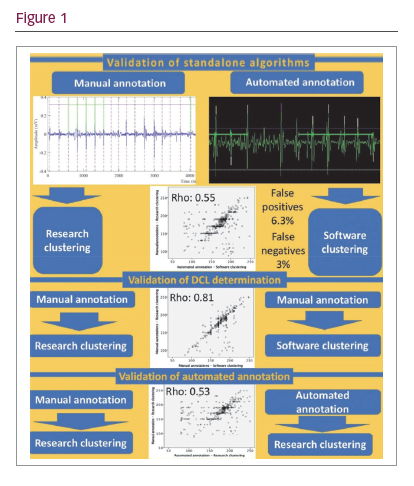Background: Non-pulmonary vein drivers of psAF may present as rapid AF cycle length (AFCL). Measurement of AFCL by manual average and by dominant frequency do not take into account the beat-to-beat variability of AFCL. Current techniques to identify drivers of psAF relay heavily on non-objective criteria for driver identification have yet to proven successful in multicentre trials.
Objective: We present the validation of a fully automated algorithm to identify rapid and regular AFCL that may provide an objective method of identifying psAF drivers.
Methods: Baseline 8 s AF segments from all major LA regions (anterior wall, posterior wall, septum, lateral wall, roof, floor, appendage, pulmonary veins) were recorded in seven patients with first time ablation for psAF. Dominant cycle length (DCL) results, and annotation and signal processing accuracy were compared from a semi-automated algorithm relying on manual annotations and automated signal processing (MAN) and a fully automated algorithm (AUT). Unannotated areas with poor signal quality did not influence results as both methods used AFCL interval clustering instead of averaging. DCL organisation index (DCLOI), representing the ratio of the area under the DCL peak to the area under the AFCL distribution of the whole 8 s segment was assessed.
Results: From seven patients, 507 AF segments were analysed, 456 had valid results by MAN (80–250 ms), 318 (75%) of AUT DCL were within 20 ms of the MAN DCL. AUT had 6.3% false negatives, 3% false positives. Annotation accuracy was moderate and signal processing accuracy was excellent (Figure 1). For segments with large (>20 ms) difference between AUT and MAN, DCLOI was significantly lower (p<0.01).
Conclusion: AUT reliably measures AFCL, validated against MAN. AF segments with larger errors between MAN and AUT (>20 ms) were less organised as measured by the DCL organisation index. Automated AFCL measurement may provide information to locate and ablate non-pulmonary vein drivers of psAF, and may be used with existing metrics such as AF voltage.








